Imagine a tomato right now! The picture is most likely an even, smooth, round, and bright red fruit displayed at your grocery store. Tomato fruits come in many shapes and forms depending on the type of tomato you grow. Once in a while, you encounter a few deformed tomato fruits. If you see this, investigate. Because you are likely having a tomato catfacing outbreak in your garden.
Tomato catfacing appears on a tomato like rough cracks, scars, and lumps on the surface of the tomato. The fruits are split along the scars and ripen unevenly between these sections. The fruits may be big or small and mature.
Catfacing in tomatoes is rare and not too infectious. Unlike other diseases like tomato blight, catfacing in tomatoes doesn’t spread too quickly from plant to plant. Because it spreads slowly, you can control the infection quickly once you spot the first sick plant.
So What Is Catfacing And What Does It Look Like?
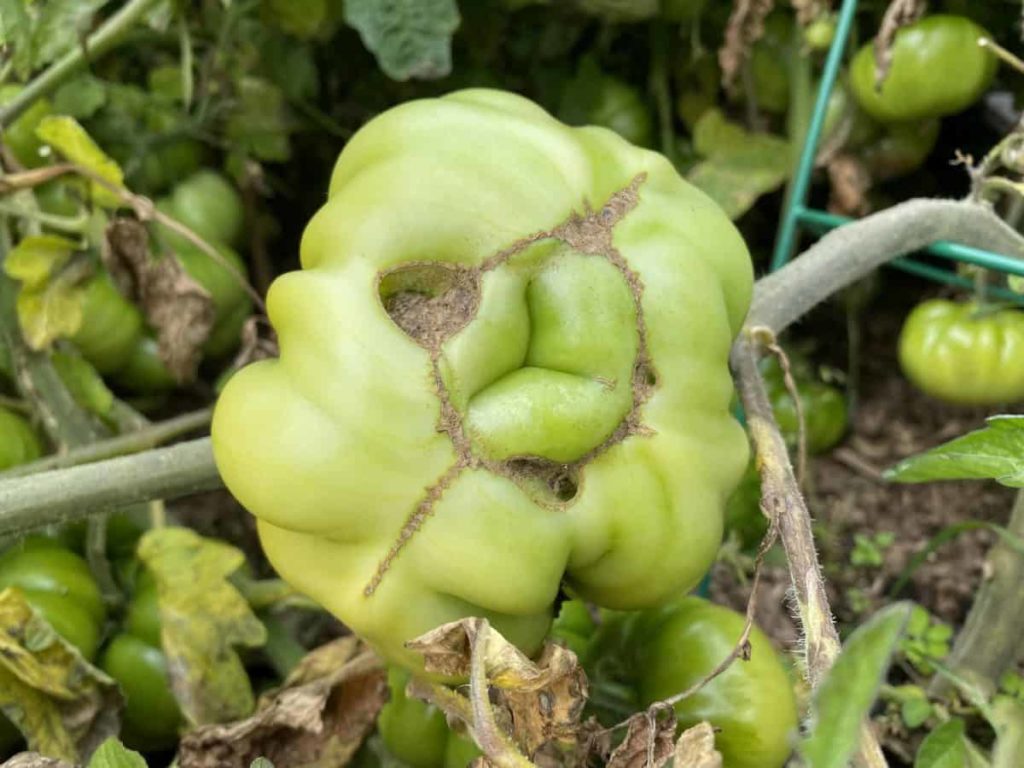
Tomato catfacing is a physiological condition that causes the above-mentioned gross malformation. The peculiar cracking and dimpling on tomatoes, peaches, apples, and even grapes have earned the name because it resembles a little cat’s face. Simply described, it’s the aberrant development of plant tissue affecting the ovaries or female sex organ (pistillate), resulting in a deformed flower and fruit production. A study by Cornell University revealed up to 40% unmarketable yield in some susceptible tomato varieties.
Catfacing appears to be more common in larger tomatoes than in smaller varieties like Roma or cherry. The good news is that the later-set fruit is unlikely to be impacted, and the tomatoes that are affected can be used after cutting out the damaged areas. Now let’s get into what causes tomato catfacing.
What Causes Catfacing In Tomatoes?
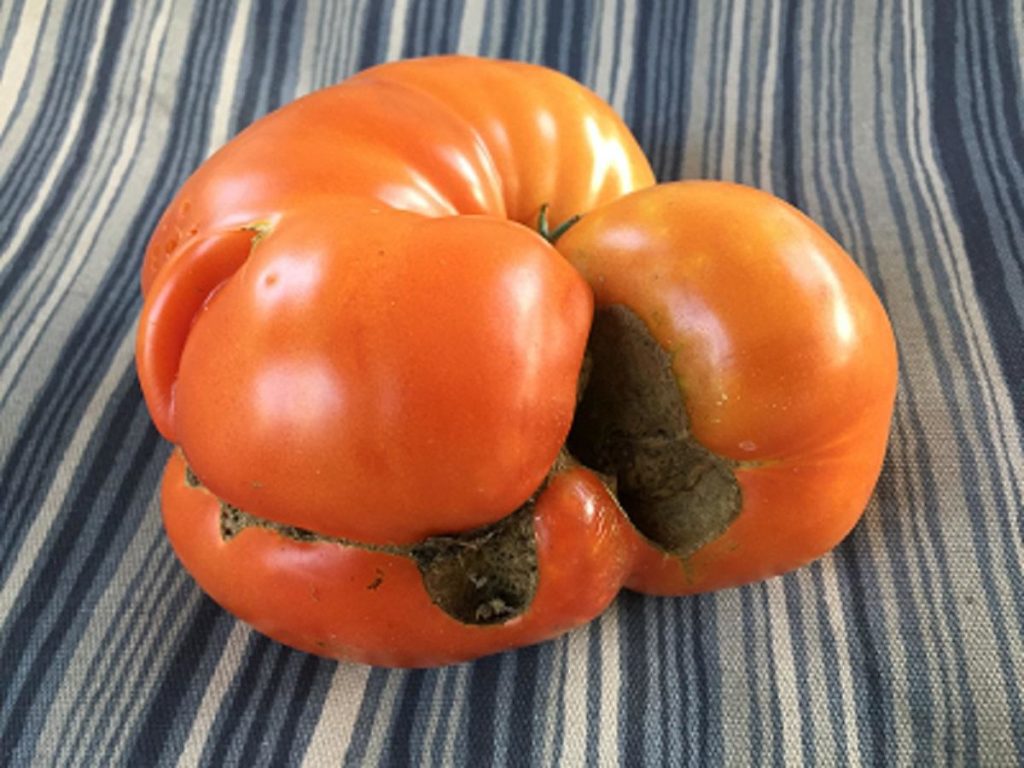
Even though a lot has gone into its research, the specific cause of catfacing on tomatoes remains a mystery. That’s not saying there aren’t a few suspects. Over the years, poor growing conditions are the most likely suspect causing catfacing in tomatoes. However, it could be caused by a variety of circumstances too.
Young Plants Vs Cold Weather
Young plants are likely to present with catfacing symptoms when subjected to cold weather or prolonged periods. About 3 weeks after blooming, tomato plants should be kept at a warm temperature because temperatures below 60 F (16 C) for several days in a row more often cause tomato catfacing.

Unfinished Pollination
Incomplete pollination occurs resulting in malformation. Houseplants That Are Difficult To Kill 11 seconds 0 percent volume 00:19 01:15 Catfacing can also be caused by physical harm to the flower. Large-fruited types, like beefsteaks or heirlooms, are also more susceptible. My heirlooms from the Pacific Northwest have it. I believe I have two strikes against me.
Exposure To Phenoxy Herbicides
Fruits also get deformed after exposure to 2,4-D herbicides which contain phenoxy-carboxylate. Young plants may be more affected by 2,4-D than older plants. How bad the deformity or catfacing gets depends on the growth conditions, period of exposure, plant age at the time of exposure, and 2,4-D content.
In the case of 2,4-D poisoning, there might be:
- fruits can have an uneven form or a rough surface
- mild to moderate leaf distortion (crinkling, curling, or elongation) to severe leaf and stem deformation.
- brittle and thickened petioles and stems are possible
- plant growth might halt for a short time (2 weeks) or for a long time
- Slow or no fruit ripening
- plants can yield a great number of tiny fruits
According to Mississippi State University, plants that have been exposed to 2,4-D or any other pesticide may be predisposed to additional diseases.
Other Causes Of Catfacing In Tomatoes
- Catfacing can also be caused by physical harm to the flower. Large-fruited types, like beefsteaks or heirlooms, are also more susceptible. My heirlooms from the Pacific Northwest have it. I believe I have two strikes against me.
- Excess nitrogen in the soil medium, as well as harsh pruning, might exacerbate the problem.
- Thrips, small, slender insects with fringed wings, could also be a source of catfacing.
- Tomato Little Leaf diseased plants are also vulnerable to tomato fruit catfacing deformity.
Read More: How to prevent fruit cracking (Growing crack free tomatoes)
How Do You Fix Catfacing On Tomatoes?
Remove Fused Flowers
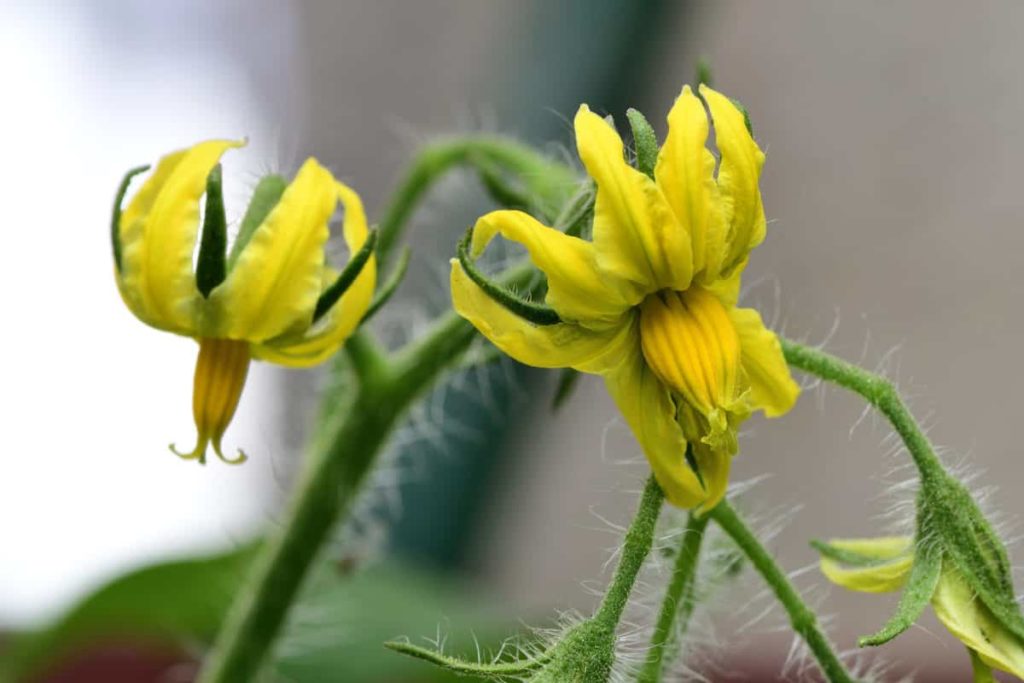
Let me share a secret. Fused flowers are like to grow into catfaced tomatoes. They are a sign of incomplete pollination. So if you want the tomato plant to focus on the market-appealing fruits, take the fused flowers out.
What? Flowers? No way! Don’t worry. You’ll be grateful.
Fused owers are easy to identify with a trained eye. You can see one in the illustration.
In my experience, these are usually the first and most terminal (at the very end of the flower stalk) flower of the bunch.
By removing these blossoms, the plant may devote its energy to producing fruit from the single unfused flowers rather than the deformed fused fruit.
As a tomato farmer, you’ll find yourself going through your tomato patch every few days or once a week. The tiny tasks that come with it become enjoyable.
Tying up loose branches, pinching off undesired suckers, removing any bottom or fading leaves, and pinching off fused blossoms are some of my favorite things to do.
Spare The Nitrogen!
According to some publications, excessive nitrogen should be avoided. In any case, this is an excellent method for cultivating tomatoes. Nitrogen promotes a lot of green, leafy growth, which is excellent. However, your tomatoes require phosphorus for roots and blooms, as well as potassium for strength and a pinch of magnesium and calcium.
A well-balanced organic meal could be a good place to start. Nutritional balance can also aid with other flower and fruit difficulties.
Watering Irregularly?
Other reports advise against watering unevenly. Also, an excellent practice. Tomatoes appreciate regular irrigation. Fruit cracking and other fruit growth issues can be reduced with consistent watering.
It’s possible that over-pruning causes catfacing
According to some instances, excessive pruning can result in catfacing. This makes logic in the sense that excessive pruning can diminish the number of blossoms. This could cause the tomato to focus its energy on fewer blooms and fruits. This may result in larger, more sensitive to catfacing fruit (but not if the fused blossoms are removed!).


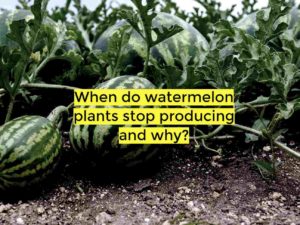
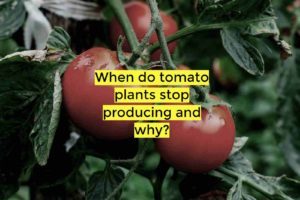

[…] Tomato Catfacing: How It Looks, Causes, And How To Fix It […]
[…] Read more about tomato diseases like Tomato Catfacing: How It Looks, Causes, And How To Fix It […]